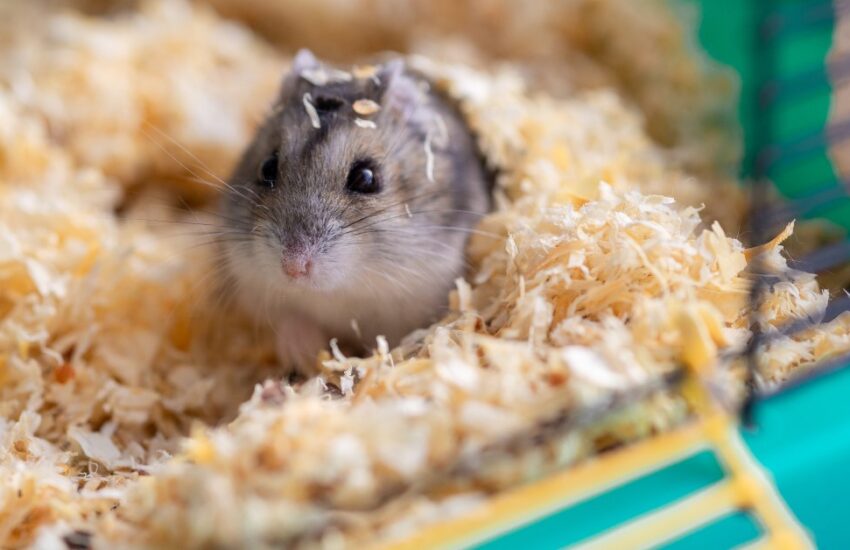Best Hamster Breeds for First Pet
Choosing your first pet is an exciting yet daunting task, and hamsters can make some of the best companions for budding pet owners. With their small size and relatively simple care requirements, they are ideal for families and individuals alike. This article will guide you through the **best hamster breeds** for first pets, dissecting their personalities, care needs, and temperament to help you make an informed decision.
Understanding Hamster Breeds
Before diving into specific breeds, it’s crucial to understand the different types of hamsters available. Most pet stores offer a few popular breeds, each with unique characteristics and care requirements. Among the primary breeds, we find the Syrian hamster, dwarf hamsters, and Chinese hamsters. Each breed varies in size, lifespan, and personality traits, making some more suitable for beginners than others.
Syrian Hamsters
**Syrian hamsters** are often regarded as the best choice for first-time owners. These hamsters are gentle, easy to handle, and have vibrant personalities. Often, they are solitary creatures; housing them alone is essential for their well-being. Syrian hamsters can grow quite large compared to other breeds, reaching 6-8 inches in length. They enjoy a variety of toys and activities, making them pretty entertaining pets.
/GettyImages-678888931-51cc783946684772b536f6346827d70a.jpg)
Dwarf Hamsters
**Dwarf hamsters** are smaller than their Syrian cousins and can be great for families with children under supervision. This group includes breeds like the Roborovski and Campbell. Dwarf hamsters are social and should be kept in pairs or groups. Each breed varies in temperament; for example, Roborovski hamsters have a more active nature and prefer play! Keep an enclosure with plenty of space and toys, so they have room to roam and explore.
/GettyImages-678888931-51cc783946684772b536f6346827d70a.jpg)
Choosing the Right Male or Female Hamster
When selecting a hamster, consider whether to adopt a male or female. Generally, **male hamsters** tend to be more social, while **female hamsters** can sometimes be more territorial. For beginner owners, males may be easier to handle, especially the Syrian breed. Females, however, often display strong maternal instincts, particularly when raised in pairs.
Socialization and Handling
Regardless of gender, it’s essential to socialize with your hamster regularly. Start by gently holding your pet in your hand for a few minutes daily, gradually increasing the time you spend together as it becomes more comfortable. Always make sure the environment is quiet and free from distractions. This practice will not only strengthen your bond but also allow you to gauge your hamster’s temperament.
Signs of a Healthy Hamster
When selecting your first hamster, ensure they show signs of health. Key indicators include moist eyes, a clean nose, and a smooth coat. Vigorous activity and a curious demeanor are also qualities of a healthy hamster. Always check your local shelter or pet store for well-maintained animals to ensure you provide a happy home.
Essential Care for Your Doorstep Companion
After choosing the perfect hamster for your home, having essential care guidelines is imperative. **Hamsters require proper housing** — ideally a spacious cage that allows them to burrow, climb, and explore. Add bedding, tunnels, food, and water sufficiently to create an inviting environment.
Feeding and Nutrition
Feeding your hamster requires a quality blend of hamster pellets, fresh fruits, and vegetables in moderation. Avoid sugary and fatty treats to maintain a healthy diet. Fresh water should always be available via a sipper bottle to keep your hamster hydrated. Regular feeding routines will help establish a stable environment for your pet.
Health and Common Issues
Keeping an eye on your hamster’s health is vital, as they can develop common issues, such as wet tail, a dangerous gastrointestinal condition. Regularly monitor your pet for any strange behavior or signs of illness, such as lethargy or lack of appetite, and consult your veterinarian promptly if anything concerns you.
Conclusion
Choosing the right hamster breed as your first pet can be a rewarding experience filled with companionship and joy. Whether you decide on a Syrian, a dwarf hamster, or perhaps something else, the key is to understand their needs and provide an enriching environment. With their easy-going nature and endearing habits, hamsters make wonderful pets. Be sure to commit the time to socialize and care for them, creating a loving home where both you and your hamster can thrive.
FAQ
1. What is the most suitable hamster breed for a child?
The **Syrian hamster** is often deemed the best breed for children due to its calm temperament and suitability for handling. They tend to be more docile and can be easily trained to interact gently with kids.
2. How often should I clean my hamster’s cage?
Ideally, clean your hamster’s cage at least once a week. Remove dirty bedding and waste regularly to maintain a healthy living environment and avoid any strong odors. Deep cleaning every couple of weeks ensures your pet stays healthy.
3. Can hamsters be housed together?
Yes, **dwarf hamsters** can often be housed together, especially from a young age. However, **Syrian hamsters** are territorial and should be kept alone. Always monitor for any signs of aggression if housing multiple dwarf hamsters in a cage.
4. What should I do if my hamster is not eating?
If your hamster is not eating, it may be a sign of illness or stress. Ensure their food and water are fresh, and check for any signs of discomfort. Consult a veterinarian immediately if unusual behaviors like this persist, as prompt attention can be crucial.
5. How do I train my hamster?
Training your hamster generally involves spending time together in a safe space. Use treats as positive reinforcement to encourage specific behaviors, such as coming to you when called or learning tricks. Consistency and patience are key to successful training.
